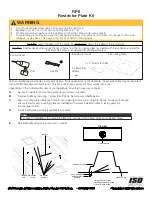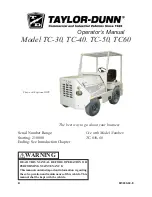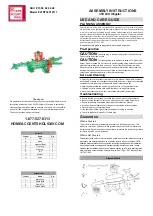
215981
5
Revision A
1.4
Hydraulic Safety
Protect yourself when assembling, operating, and servicing hydraulic components.
1001205
Figure 1.8: Testing for Hydraulic Leaks
•
Always place all hydraulic controls in Neutral before leaving
the operator
’
s seat.
•
Ensure that all the components in the hydraulic system are
kept clean and in good condition.
•
Replace any worn, cut, abraded, flattened, or crimped hoses
and steel lines.
•
Do
NOT
attempt any makeshift repairs to hydraulic lines,
fittings, or hoses by using tapes, clamps, cements, or
welding. The hydraulic system operates under extremely
high pressure. Makeshift repairs can fail suddenly and create
hazardous conditions.
1001207
Figure 1.9: Hydraulic Pressure Hazard
•
Wear proper hand and eye protection when searching for
high-pressure hydraulic fluid leaks. Use a piece of cardboard
as a backstop instead of your hands to isolate and identify
a leak.
•
If injured by a concentrated, high-pressure stream of
hydraulic fluid, seek medical attention immediately. Serious
infection or toxic reaction can develop from hydraulic fluid
piercing the skin.
100001
3
Figure 1.10: Safety around Equipment
•
Ensure that all components are tight and that steel lines,
hoses, and couplings are in good condition before applying
pressure to a hydraulic system.














































